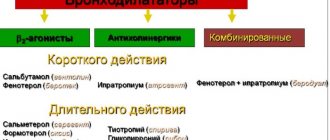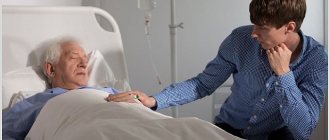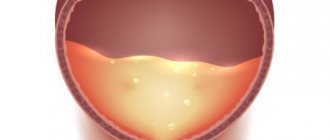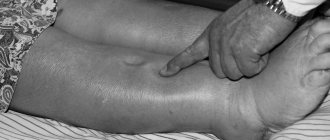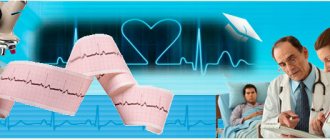Causes
The factors causing the pathological condition are very diverse. For convenience, they are usually divided into categories, depending on what disease caused shortness of breath.
- Physiological. They are not dangerous and occur as a result of physical activity.
- Respiratory. Attacks of shortness of breath can be triggered by bronchial asthma, allergies, tuberculosis, pneumonia, and poisoning with volatile substances.
- Neuromuscular. For example, phrenic nerve palsy.
- Heart diseases. The appearance of shortness of breath is often associated with the development of diseases such as heart attack, heart defects, and heart failure.
- Vascular.
- Lung pathologies – inflammation, diffuse diseases of the organ.
In addition to the above reasons, the following conditions can lead to shortness of breath:
- Head injuries that impair the function of the respiratory center. This also includes neuroinfections.
- Anemia.
- Pregnancy.
- Metabolic disorders.
- Ascites.
- Thyroid diseases.
- Neuroses, panic attacks. There is a feeling of lack of air and tightness in the chest.
- Obesity.
- Feverish conditions. Manifested by rapid shallow breathing.
- Being in a stuffy room.
Shortness of breath is always a symptom of pathological conditions of the lungs and bronchi. It can occur suddenly or appear over a long period of time - it all depends on the concomitant disease.
In this category of diseases, the nature of shortness of breath will be expiratory, often accompanied by sputum discharge and cough. The airways, in which viscous secretions may form, will be narrowed.
For example, with bronchial asthma, a person feels sudden attacks of lack of air. in most cases this occurs upon contact with an allergen. Special medications that dilate the bronchi will help normalize the condition. If they do not bring a positive result, there may be a threat to life.
Shortness of breath is also a symptom of diseases such as pneumonia and bronchitis. The degree of its manifestation will depend on the severity of the disease.
One of the most dangerous diseases that are accompanied by shortness of breath is airway obstruction. A severe, painful cough may bother you. In this case, inspiratory dyspnea is diagnosed, accompanied by noisy breathing.
If the heart cannot cope with the load, shortness of breath occurs. In the vessels of the lungs, blood flow slows down and pressure in the arteries increases, resulting in spasm of the arterioles. Naturally, gas exchange is disrupted.
Organs and tissues begin to experience oxygen starvation. Signals go to the brain, and the respiratory system is activated, taking deep and frequent breaths.
You can describe in more detail the pattern of development of shortness of breath in heart disease:
- If the left parts of the heart are affected, then the volume of cardiac output decreases and blood stasis forms in the lung area.
- Congestive manifestations disrupt the gas exchange of the respiratory tract, which causes a failure in their ventilation.
- To normalize breathing, the body increases the depth and frequency of breaths. This is how shortness of breath develops.
Almost all cardiovascular pathologies are accompanied by shortness of breath of various types:
- In older people, lack of air occurs due to ischemia and arterial hypertension.
And since there is a correlation between hypertension and excess weight, in obese patients with constantly high blood pressure, shortness of breath is present not only during exercise, but also at rest, and even at night.The sleep of such people is disturbing and is often interrupted by apnea.
- Myocardial infarction and its asthmatic variant have all the signs of left ventricular failure. There is hoarse breathing with shortness of breath and even suffocation.
- All chronic heart lesions are accompanied by nocturnal shortness of breath.
- Cardiac asthma causes a lot of suffering.
- Pulmonary edema is very dangerous and can be fatal.
- Thromboembolism, which causes respiratory failure, generally cannot exist without shortness of breath and suffocation.
How to determine that shortness of breath is cardiac? This shortness of breath has specific symptoms that you need to know:
- Inhalation is very difficult.
- Occurs and intensifies under any load.
- Occurs in a lying position. The horizontal position forces the heart to work harder. If you sit down, your breathing will normalize.
This pathology can progress to a severe phase - pulmonary edema. Severe weakness appears, breathing becomes heavy, lips turn blue and panic begins. At the same time, known methods of getting rid of shortness of breath do not help.
Why does shortness of breath occur when walking?
Severe shortness of breath and palpitations when walking in older people occurs with excessive physical exertion while walking up the stairs or long walks after a sedentary lifestyle. Rehabilitation specialists recommend that older people gradually increase physical activity and rest more often.
Severe shortness of breath when walking in older people occurs with increased emotional stress and excess weight. The cause of shortness of breath may be the following diseases:
- Anemia;
- Heart failure;
- Bronchial asthma;
- Cardiac ischemia;
- Chronic obstructive pulmonary disease.
With anemia, patients complain of dizziness, weakness, increased fatigue, shortness of breath, which increases when walking. Their nails and hair become brittle, cracks appear in the corners of their lips.
In patients suffering from chronic heart failure, the heart cannot fully perform its functions, and the blood does not deliver enough oxygen to the internal organs. A large amount of carbon dioxide accumulates in the body, which stimulates the respiratory center. For this reason, the frequency of respiratory movements and heart contractions increases, shortness of breath appears, which in older people increases when walking.
Bronchial asthma is a disease that rarely begins in old age. Patients experience expiratory shortness of breath, which makes it difficult to exhale. Attacks of suffocation lead to panic, which intensifies suffocation.
The cause of coronary heart disease is insufficient blood supply to the myocardium due to pathology of the coronary arteries. The disease is initially asymptomatic. Over time, angina attacks occur and shortness of breath appears. Older people may develop myocardial infarction.
A common cause of shortness of breath in older people is chronic obstructive pulmonary disease. It develops as a result of frequent respiratory diseases in smokers. Patients are first bothered by a constant cough, then shortness of breath develops, worsening when walking.
Shortness of breath can develop in older people suffering from thyrotoxicosis, diabetes, and obesity. In the first case, the patient's metabolism accelerates, the need for oxygen increases, the frequency of contractions of the heart muscle increases, and hypoxia (lack of oxygen) appears. In patients with diabetes, as the disease progresses, the blood vessels are affected, and oxygen starvation occurs in the body, which causes shortness of breath. Obesity makes it difficult for internal organs to function and leads to shortness of breath in older people. It gets worse when walking.
How to get rid of shortness of breath at home?
Before eliminating this pathology, it is necessary to understand the mechanism of its development. The main reason for shortness of breath is that blood flow decreases because... the heart cannot cope with the resulting load. Some of the fluid begins to seep through the vascular walls into the lungs. They cannot saturate the blood with oxygen, so it becomes difficult for a person to breathe.
- Inspiratory. When breathing is physically impaired. The time to inhale increases and the time to exhale decreases.
- Heart. Breathing is deep and frequent. Indicates that a person is developing heart failure.
- Expiratory. Also refers to physical breathing problems. With it, the time to inhale decreases, and the time to exhale increases.
Before starting treatment for shortness of breath, it is necessary to determine its type and cause. Until this point, you should not take any medications or folk remedies in the hope of eliminating the attacks. When the cause is established, therapy can begin. You should not completely rely on herbal decoctions and other methods of correcting shortness of breath developed by traditional healers.
If the attack begins, the patient should sit in a chair. You can use a bed instead of a chair, but you need to put pillows under your back. The patient must be reassured, because any panic speeds up the heartbeat, which does not help relieve shortness of breath at all. It is necessary to ensure a flow of fresh air, i.e. open the windows.
Severe shortness of breath in an elderly person - what to do?
Table of contents
Often accompanied by the following symptoms:
- feeling of lack of air;
- noise when inhaling and exhaling;
- feeling of tightness in the chest;
- increased heart rate during exercise;
- attacks of suffocation.
Types of shortness of breath in the elderly
Dyspnea (shortness of breath) is considered a function of the body's adaptation and often occurs not only in the elderly, but also in young people.
Physiological shortness of breath manifests itself during significant physical exertion, while pathological shortness of breath occurs when organs are damaged by diseases.
For example, rapid breathing when climbing to the 5th floor or more, running quickly for several minutes, carrying heavy objects, etc. with increased breathing is not considered a pathology.
If breathing problems occur with minor exertion (walking on level ground, slight physical exertion) or at rest, we are talking about a pathological condition that requires medical attention.
Expiratory – with difficulty exhaling (with lung diseases).
Inspiratory - narrowing of the lumen of the bronchi and trachea, with difficulty in inhaling.
Mixed (the most common form in old age) - occurs with heart failure.
Depending on the frequency of inhalations and exhalations, shortness of breath is distinguished into two types:
- Tachypnea , with rapid shallow breathing (up to 60 or more per minute) - manifests itself in hysteria, blood diseases, fever.
- Bradypnea , with a decrease in the frequency of inhalations and exhalations (up to 12 or less per minute) - with severe hypoxia or other brain damage, with diabetic coma, etc.
In older people, shortness of breath occurs quite often and can be caused by various disorders and diseases.
Unlike a young body, which copes without complications with the suffocation that arises during severe overloads, oxygen starvation (for example, when conquering mountain peaks), an elderly one is not able to cope with the normalization of blood gas composition, the disease appears against the background of cardiovascular diseases or disorders in the functioning of the nervous system. Depending on the cause of this pathology, taking into account the individual characteristics of the body, treatment is prescribed.
Causes of shortness of breath in the elderly
- Low blood hemoglobin. To eliminate anemia, it is necessary to undergo a course of treatment with iron supplements.
- Panic attacks. If negative emotions such as fear, anxiety, anger arise constantly, consultation and treatment with a psychiatrist is necessary.
- Physical overload. A person who is not accustomed to intense physical labor and suddenly becomes overloaded may have health problems. In this case, a long rest is necessary.
- Obesity. Excess weight creates additional stress on all organs. It is difficult for such people to move not only when climbing floors, but also difficult to walk on level ground. The problem of suffocation will disappear after losing extra pounds, however, this process must be gradual. Sudden weight loss is also harmful to health.
- Lung diseases. You cannot treat yourself or take any medications. Consultation with a pulmonologist is required! With reduced gas exchange in the lungs, all organs, including the brain, constantly do not receive the required amount of oxygen. The lack of adequate treatment leads to the death of nerve cells and other pathologies.
- Asthma. Seizures occur regardless of stress, even at rest. If an attack occurs, you must urgently call an ambulance; inaction can lead to pulmonary edema and death!
- Ischemic disease. The coronary vessels do not allow enough blood into the myocardium, resulting in angina. The patient experiences severe chest pain, shortness of breath and discomfort. With coronary artery disease there is a risk of heart attack and death. Contacting a medical institution is mandatory!
- Heart failure. The organ is unable to pump blood through the system. The blood supply to all organs, including the heart muscle, is disrupted. The condition threatens cardiac arrest. Urgent medical attention required!
- Failure due to infarction. Urgent medical attention required! The condition threatens the death of large areas of the heart muscle.
- Thrombophlebitis. When the pulmonary artery is blocked, there is an urgent need to save the patient's life. Symptoms: blue face, cramps in the calves.
How to help an elderly person with shortness of breath in an emergency
Diseases associated with heart failure are life-threatening and it is necessary to be able to distinguish such conditions in order to provide timely help to the person.
Symptoms indicating that the lack of oxygen is associated with a problem with the heart:
- an elderly person has difficulty taking a breath;
- with any type of exertion, shortness of breath increases;
- shortness of breath appears in a lying position; in a sitting position, normal breathing is restored.
A person's lips turn blue, weakness and panic occur. Such symptoms are dangerous (pulmonary edema may occur) and require an immediate call to the ambulance.
Treatment
Treatment of shortness of breath in older people can begin only after a competent medical examination and the prescription of medications by an appropriate specialist.
To achieve the effect of enhancing the contractile function of the heart, glycosides (digoxin, strophanthin) are prescribed. When excess fluid accumulates in the body, swelling, drugs are prescribed to remove it (furosemide, hydrochlorothiazide).
To maintain and restore vascular tone, vasodilators (isoket, apressin, etc.) are needed; they increase blood flow and reduce the load on the heart. To quickly relieve spasms by expanding the lumens of the bronchi, bronchodilators (salbutamol, fenoterol) are used.
For inflammatory diseases, antibacterial drugs are prescribed.
In addition to medications for shortness of breath, breathing exercises, fresh air and moderate regular physical activity are mandatory components. A good addition (but not the main remedy) to drug treatment would be the use of folk recipes.
For nervous tension, soothing herbal teas are especially helpful, and for edema - diuretic herbal preparations. But remember the main rule: the answer to the question “What to do if an elderly person has severe shortness of breath?” Only a doctor can give! First, you need to contact a therapist who will prescribe the necessary studies and tests.
Next, the problem of shortness of breath should be dealt with by a specialist in the field of disease that resulted in the pathology.
Boarding houses of the Longevity network offer elderly people with various diseases accommodation in environmentally friendly areas of Moscow and the Moscow region. Here you can settle for a while (for rest and treatment) or for permanent residence. Good care, daily walks in the fresh air, proper nutrition and medical care - all this will be provided in any establishment of the network.
- Pulse is one of the most important ways to distinguish a healthy person from an unhealthy one.
- Elderly people often experience sudden changes in blood pressure with alternating high...
- What to do if an elderly person's legs swell? Why do strong...
Source: https://centr-dolgolet.ru/articles/silnaya-odyshka-u-pozhilogo-cheloveka-chto-delat
Drug therapy
How to relieve attacks and how to treat shortness of breath in heart failure, what pills are prescribed by specialists for this? To eliminate it, you should act on the cause, which is heart failure.
It is imperative to conduct a thorough diagnosis to help find the root cause of the disease - high blood pressure, coronary artery disease or congenital heart disease.
Treatment is long and sometimes lifelong, since due to irreversibility, existing disorders cannot be eliminated. Heart ailments will decrease if treated comprehensively.
The following drugs are prescribed:
- Glycosides. Digoxin and Korglykon have a cardiotonic effect. Tachycardia is eliminated.
- Inhibitors. Quinapril, Ramipril, Trandolapril restore blood vessels and dilate arteries.
- Diuretics. Britomir and Furosemide remove swelling and reduce the load on the heart.
- Vasodilators. Isoket, Nitroglycerin, Minoxidil normalize vascular tone.
- Beta blockers. Carvedipol, Metopropol, Celipropol eliminate arrhythmia and oxygen starvation.
- Anticoagulants. Warfarin, Arixtra, Sinkumar prevent the formation of blood clots and thin the blood.
- Statins. Lipostat, Anvistat, Zocor lower cholesterol and prevent the formation of plaques.
- Antithrombotic drugs. Cardiomagnyl, Aspirin Cardio, Curantil act as well as anticoagulants.
If drug treatment of shortness of breath in heart failure is ineffective, surgical intervention is recommended:
- Eliminate valve defect.
- Installation of a pacemaker.
- Ventricular transplantation.
- Wrapping the heart with a frame.
- Heart transplantation.
Prevention
It does not matter whether a person suffers from cardiac dyspnea or another type. The first priority is to provide the lungs with sufficient oxygen. To do this, a person suffering from shortness of breath should adhere to the following recommendations:
- Perform breathing exercises. Of course, high-intensity exercises allow you to train your heart, but when the lack of air occurs out of nowhere, you won’t be able to cope with them. The first step of such people towards health is breathing exercises. By performing 2-3 exercises a day, you can compensate for the lack of oxygen in the lungs and reduce the frequency of attacks.
- Low to moderate intensity physical activity. Until the patient brings his body and organs back to normal, he should not subject himself to excessive physical work. Exercises performed at an average rhythm help strengthen the heart, blood vessels, and improve blood circulation. If you don't like to train purposefully, then just take 2-3 hour walks in the fresh air.
- Quit cigarettes, caffeine and alcohol. These products and the substances in them provoke vasoconstriction, which provokes more attacks.
- Avoid stress. When the psycho-emotional state is unstable, people produce a lot of cortisol. This hormone affects the cardiovascular system and metabolic processes. As a result, the vessels narrow, and air flows poorly to all organs.
It is also worth mentioning that all people suffering from shortness of breath should follow the doctor’s recommendations. Do not neglect the doctor's advice, because... only he is able to develop the correct treatment plan.
Evaluation of patients with shortness of breath
At the first stage of examining an elderly patient with suspected chronic shortness of breath, doctors at the Yusupov Hospital determine which organ system is primarily affected: cardiac, pulmonary, both or neither. If the patient continues to suffer from shortness of breath despite intensive therapy, exclude the presence of a concomitant factor - an emotional reaction to the disease or a deterioration in general physical condition. Elderly patients with chronic cardiopulmonary disease may gradually limit physical activity because shortness of breath is associated with exertion, which leads to subsequent imbalance of the cardiovascular system and further worsens shortness of breath with walking or exercise. An analysis of anamnestic data, the results of a physical examination and plain radiography helps to establish an accurate diagnosis.
For chronic shortness of breath, which worsens in older people when walking, doctors perform first-level tests:
- Detailed general blood test;
- Metabolic indicators;
- Plain radiography of the chest organs;
- Electrocardiography;
- Spirometry;
- Pulse oximetry.
Second-level tests include echocardiography, determination of the level of brain natriuretic peptide, pulmonary function testing, Holter monitoring, and radioisotope research methods. If the diagnosis has not been established, after consultation with specialists, at a meeting of the Expert Council, a decision is made on the safety of performing third-level tests on elderly patients: examination of the cardiovascular system during exercise, bronchoscopy, and lung biopsy.
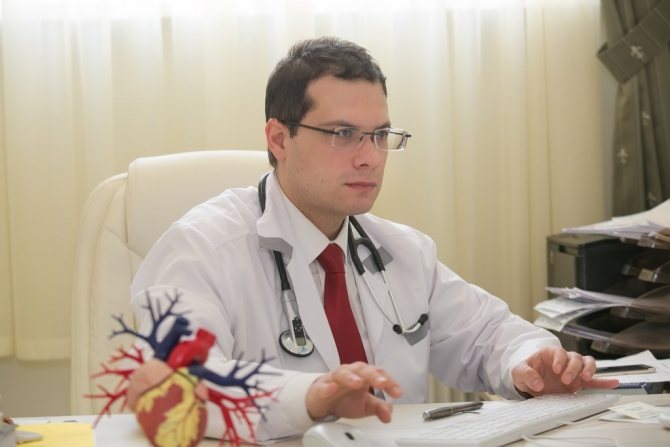
Folk remedies for illness
Patients often try to be treated with folk remedies. This is widespread, as breathing problems can last for years, being painful and with a noticeable decrease in quality of life.
Medicinal herbs act on the principle of synthetic drugs, but are almost harmless and without side effects.
Since most pharmaceutical drugs are made based on the medicinal properties of plants, why not try preparing the medicine at home.
But before you drink anything for shortness of breath and heart failure, you should definitely consult your doctor.
Some home remedies actually help (temporarily):
- Licorice roots, mint and yarrow are great for making your own medicine.
- Aloe leaves infused with vodka quickly eliminate any cough and shortness of breath. Take a teaspoon of infusion, then a tablespoon of honey and after a ten-minute pause, drink a glass of tea. The reason remains, the disease continues to progress and you will still have to start traditional treatment. You can't do it without the help of doctors.
- Cranberry herb, which is brewed and drunk like tea, helps a lot.
- You can get rid of cardiac shortness of breath with the help of motherwort tincture.
It’s sad, but traditional medicine recipes only help at first, and you shouldn’t rely on them.
Treatment of shortness of breath in older people: traditional and folk methods
Hello, dear readers! Many people often experience shortness of breath as they age. In this case, nutrients and oxygen are difficult to deliver to the heart, which causes great harm to the body. Treatment of shortness of breath in older people should be taken under control: at the initial stage, it is easier to find and eliminate the cause than when the disease becomes irreversible.
What is shortness of breath
In medicine, shortness of breath is called dyspnea or apneustia. At the same time, the frequency and depth of breathing changes.
Shortness of breath is accompanied by:
- burning in the lungs;
- increased breathing.
It may be difficult for a person to inhale (inspiratory type) or exhale (expiratory type). More common is the combined type, when it is difficult to both inhale and exhale.
Causes
The mechanism of occurrence is as follows:
- since the lungs do not saturate the blood fully, tissues and organs experience oxygen starvation;
- the brain sends a signal to increase breathing in order to get rid of this condition and gain a double supply of air.
Why is this happening? There are two groups of reasons:
- Exogenous - due to external influences. Factors include excessive physical or psycho-emotional stress for the body, improper medication use, and bad habits.
- Endogenous - as a result of internal pathologies. Among them are heart failure (HF), ischemia (CHD), bronchial asthma, lung diseases, and anemia.
Only after determining the cause will the doctor prescribe treatment.
Kinds
Shortness of breath is not an independent disease, but just a symptom of another pathology.
Therefore, the following types of shortness of breath are distinguished:
- pulmonary (for pneumonia, pleurisy, poisoning);
- cardiac (with heart failure, including in chronic form);
- cerebral (for injuries, tumors, edema, hemorrhages, infections);
- hematogenous (for anemia, acidosis, diabetic coma).
Conventionally, the last group includes intoxication with alcohol-containing liquids, tobacco, and drugs.
When should you see a doctor and which one?
If you have shortness of breath, you need to visit a GP. If necessary, he will schedule consultations with more specialized specialists - a cardiologist, pulmonologist, hematologist, rheumatologist, allergist-immunologist, phthisiatrician, neurologist, oncologist, endocrinologist, infectious disease specialist.
They will pay attention to a number of additional signs to distinguish one disease from another:
- whether increased breathing is associated with physical activity or appears even at rest;
- does dyspnea occur suddenly if you take a horizontal position;
- are there additional sensations such as fear of death, chronic fatigue;
- Is shortness of breath accompanied by increased blood pressure, blue lips, cough, swelling, pain when urinating.
Additional examinations are prescribed:
- ECG, Holter monitoring, ultrasound, x-ray, coronagraphy, scintigraphy;
- tests for biochemistry, coagulogram, general urine test, etc.
This is still far from a complete list.
First aid for sudden shortness of breath
If this condition appears unexpectedly, do not wait to make an appointment at the clinic. Emergency hospitalization will help here (most likely it is an acute form of cardiac asthma or pulmonary edema).
The algorithm before the brigade arrives is simple:
- First, open the window to let in fresh air, this is what your body needs.
- Then unfasten anything that is pinching your chest, making a full breath impossible.
- If an elderly person is lying down, sit him down if possible. The legs should not be at the same level as the heart.
- Next, place Nitroglycerin under your tongue.
Most likely, if breathing does not become free, doctors:
- Eufillin will be administered intramuscularly;
- will give Furosemide as a diuretic;
- bandage the limbs with a tourniquet to limit blood access to the heart;
- They will offer hospitalization and bed rest for 3 weeks.
Otherwise, wait for decisions from a therapist or cardiologist. They will prescribe appropriate medications. But remember that only an integrated approach with lifestyle changes will help.
Is it possible to cure
There is still no universal treatment regimen for the disease. Therapy will depend on the underlying disease. But how to eliminate shortness of breath in heart failure during acute and severe attacks?
Doctors prescribe:
- Anxiolytic drugs. Changing the patient's perception of this symptom reduces breathing problems.
- Oxygen. Indicated for patients with heart failure who have shortness of breath at rest and even during sleep.
- Respiratory care. Ventilation of the lungs with special masks.
But these are auxiliary methods of treatment, and the main treatment is carried out in the field of cardiac pathologies.
Causes of shortness of breath
- Strong physical activity. This could be walking up the stairs or taking long walks after a sedentary lifestyle. You need to gradually increase your physical activity for overall health benefits.
- Neuroses and increased emotional stress. With their frequent and strong impact on human health, it is worth going to the doctor.
- Overweight. It is necessary to control your weight, eat healthy foods and lose weight.
- Anemia. The disease needs to be treated; complications are possible.
- Heart failure. In this case, shortness of breath occurs when lying down and disappears when sitting - a sign of a serious problem. You urgently need to see a cardiologist.
- Cardiac asthma causes shortness of breath for many hours and subsequently leads to pulmonary edema. If the attack lasts for a long time, you should definitely call an ambulance.
- Pulmonary artery thrombophilia. It is characterized by a severe cough, chest pain, bluish skin, leg cramps and swelling. There is a high risk of a blood clot moving into the pulmonary artery, which leads to death. If you have these symptoms, you should immediately go to the doctor.
- Difficulty breathing and pulmonary diseases. You need to see a pulmonologist.
Useful tips
To eliminate the symptom, taking medications is not enough. You should intensify your life, react correctly to stress, follow a diet and physical activity. The patient is recommended:
- To refuse from bad habits.
- Frequent walks, preferably in a park or forest.
- Avoid activities that cause shortness of breath.
- Clothing should not restrict movement.
- Medicines should be kept in a visible place (no one is guaranteed against unrest).
- The head of the bed should be raised 40 degrees.
- Eating in small portions.
- A low-calorie diet with limited sodium content is required.
- Daily blood pressure monitoring.
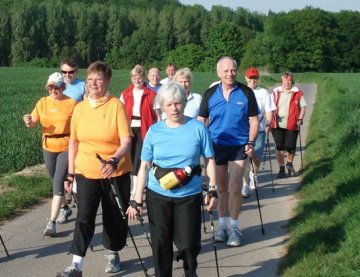
What not to do:
- Take medications that retain fluid.
- Change dosages.
- Ignore the assigned daily routine.
- Sleep less than 8 hours.
- Stay in a stuffy room for a long time.
Often the patient mistakes his shortness of breath for a lung disease or as a consequence of prolonged smoking.
This delays diagnosis and delays the timely initiation of necessary therapy. Advanced heart failure threatens with a dangerous pathology - pulmonary edema.
Description
Shortness of breath (dyspnea) is one of the main signs of pulmonary and cardiovascular diseases. Characterized by disturbances in breathing rhythm. The appearance of this symptom may indicate irrational physical activity or the development of pathological changes in the body. The peculiarity of this will be that if the cause is vigorous physical activity, breathing will be restored within a few minutes, but if there are serious factors causing shortness of breath, it will take more time to restore the breathing rhythm.
Classification
Physiological shortness of breath is a normal condition and does not require any therapeutic measures. But to determine the cause of pathological dyspnea, it is necessary to first determine its type.
Experts distinguish the following types:
- Inspiratory dyspnea. Characterized by difficulty breathing. It is observed with diphtheria of the larynx, acute respiratory infections and pathologies in which compression of the bronchi occurs (for example, with bronchial asthma).
- Expiratory. It is observed with difficulty in exhaling. This type of shortness of breath can occur with chronic obstructive pulmonary disease.
- Mixed. Both exhalation and inhalation are difficult. Occurs in serious pathological conditions of the lungs and heart failure.
The severity of shortness of breath is also distinguished:
- 0 degree. Dyspnea occurs only during intense physical exertion.
- Grade 1 – mild. Shortness of breath may occur when climbing up or when walking quickly.
- 2nd degree – average. Breathing becomes difficult when walking normally. Periodic stops are required to rest and stabilize the respiratory rhythm.
- Grade 3 – severe. Shortness of breath occurs during normal walking, and stops are required every few minutes.
- Grade 4 – extremely severe. Difficulty breathing occurs even at rest.
Classification of shortness of breath
Dyspnea in the elderly is classified by type and location.
- Expiratory. A person exhales heavily due to the narrowed lumen of the bronchi. Characteristic of COPD diseases.
- Inspiratory. The patient has difficulty inhaling air, which is caused by a narrowing of the lumen in the trachea.
- Mixed. The most common. The patient both inhales and exhales poorly. Occurs in people with heart disease.
Classification by place of origin:
- Pulmonary. There are disturbances in the respiratory system. They can be caused by gases, pleurisy, pneumonia, or blockage of a pulmonary artery.
- Heart. The respiratory center becomes irritated and physical tension becomes stronger. The blood does not receive enough oxygen.
- Cerebral. Associated with irritation in the respiratory center. Occurs with disorders of the nervous system, infectious diseases, oxygen starvation.
- Hematogenous. The reason is a change in healthy blood chemistry. Shortness of breath in this situation is a symptom of acidosis, anemia, hypercapnia or diabetic coma.
Treatment
The cause of an unpleasant symptom can be a large number of factors. Therefore, in order to find out how to get rid of shortness of breath, it is necessary to determine the underlying disease. In most cases, when treatment is effective, the symptom disappears. Otherwise, the following treatment measures can be applied:
- Oxygen therapy. Treatment with oxygen.
- Bronchodilators.
- Taking anxiolytics, which are prescribed for obstructions.
- Taking antihistamines and antispasmodics.
Medicines for shortness of breath in bronchial asthma are special anti-asthmatic drugs that help get rid of all manifestations of the pathology. Unfortunately, in most cases, taking medications for this pathology will be lifelong. Eufillin, which is administered intravenously, and glucocorticosteroids have proven themselves to be effective in relieving the symptoms of bronchial asthma. Drugs that relieve spasm in the bronchi can also be used. These include Fenoterol.
The occurrence of shortness of breath in older age without proper treatment can lead to dangerous consequences. During treatment, it is very important to obtain a preliminary consultation with a doctor and undergo the necessary tests. It is worth remembering that all tablets for shortness of breath should be used only after consultation with your doctor.
Further actions
If shortness of breath appears repeatedly, this indicates the need to reconsider your lifestyle and make adjustments to it. In the case when a sick person has visited a doctor and knows his diagnosis, it is important for him to treat his illness. The treatment of one disease can be very different from another, so you should not select medications and procedures on your own.
But there are several recommendations that are relevant in almost all cases. They help to gradually reduce the load on the body and reduce the likelihood of shortness of breath reoccurring. Even if the attack recurs, it will be less severe.
Here are some such recommendations:
- Stop smoking and reduce the amount of alcohol consumed as much as possible. Any narcotic drugs are strictly contraindicated.
- Cooperate with the attending physician, treat, and do not cause the disease.
- Watch your weight. One of the causes of shortness of breath may be obesity or severe exhaustion.
- Review your diet. It should be nutritious and healthy.
- Exercise. Running or going to the gym may be contraindicated, but you can always increase your physical activity by adding walking to your schedule.
- Humidify the air in living spaces.
- Ventilate rooms regularly, avoid stuffy rooms.
All of the above tips can be easily applied even at home. But this does not mean that you do not need to visit a doctor. Only he can make a diagnosis and select appropriate treatment. Most likely, his recommendations can be combined with traditional medicine recipes.
